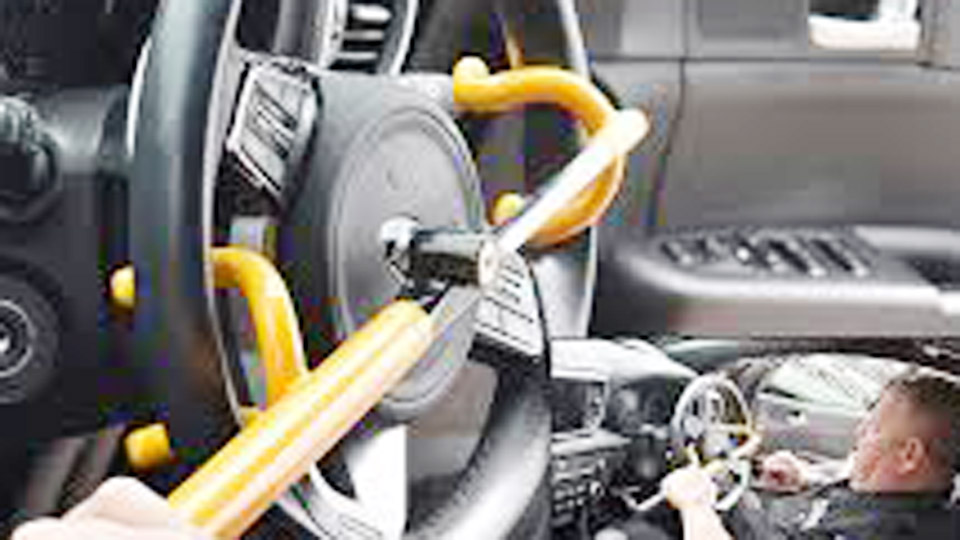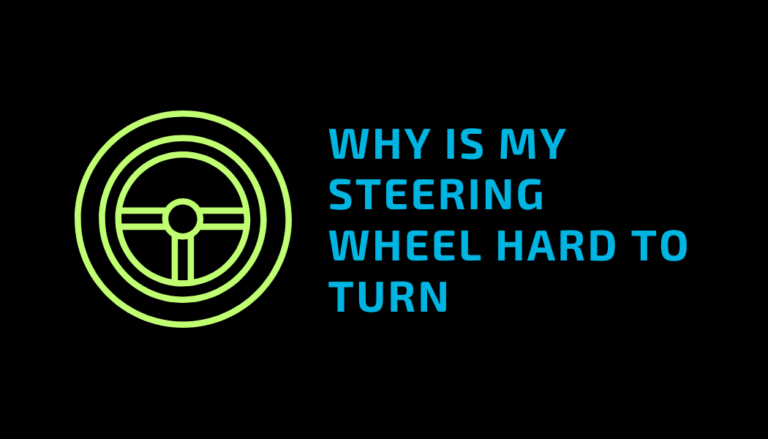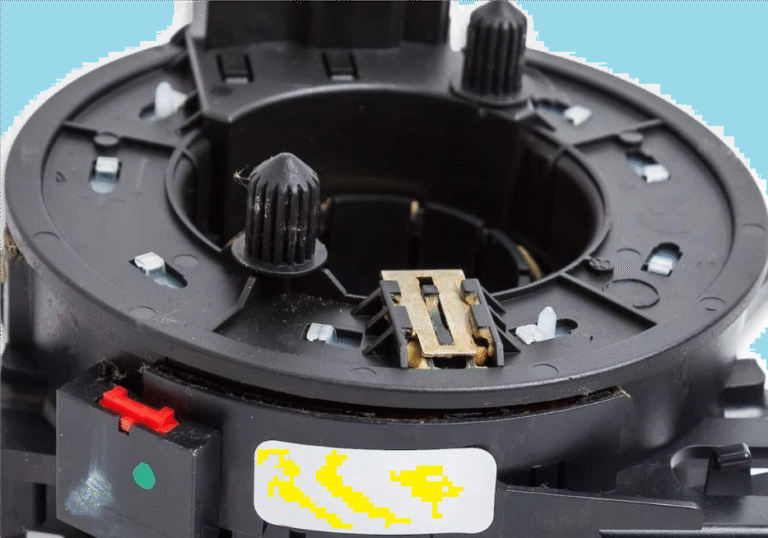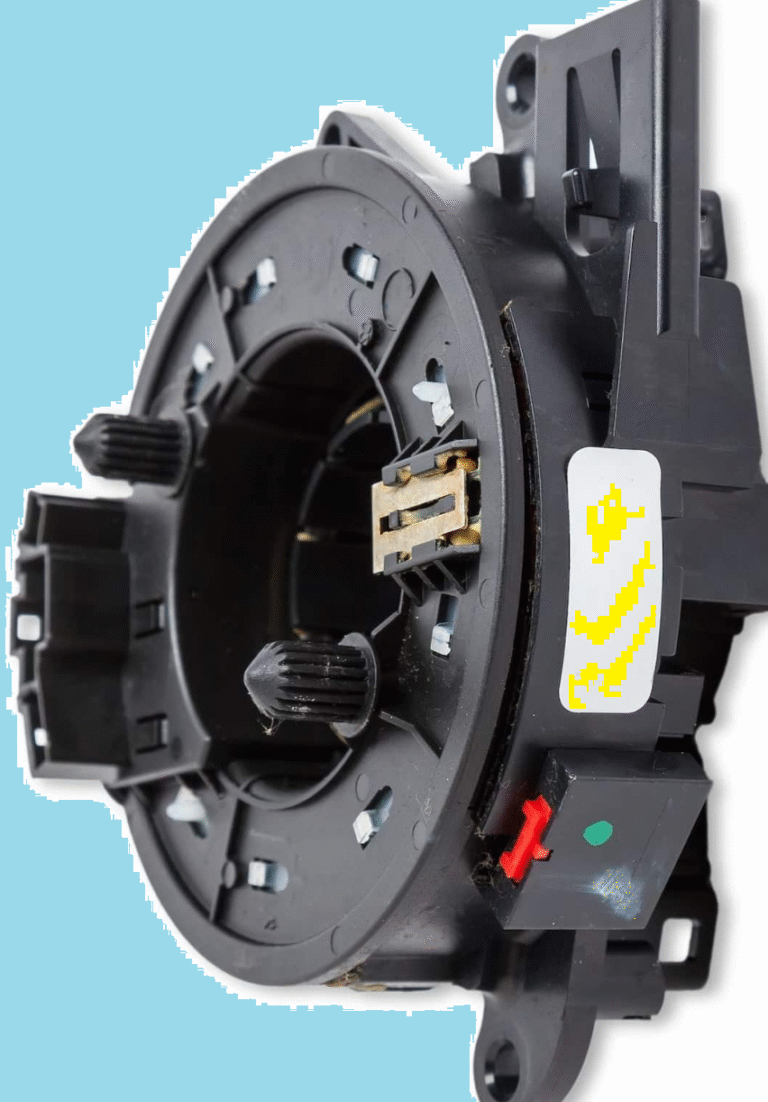I still remember the first time I saw a steering wheel lock on my uncle’s old sedan. It looked like a medieval weapon strapped across the wheel—but he swore by it. Years later, after a break-in attempt on my own car, I finally understood why. That cheap piece of metal suddenly seemed like one of the smartest security tools I could own.
After using one regularly—and doing a bit of digging into how they actually work—I realized there’s more to steering wheel locks than just a visual deterrent. They physically restrict the wheel from turning, making it nearly impossible to steer the car without removing the device. And while no anti-theft tool is foolproof, the right steering wheel lock can seriously slow down or discourage thieves altogether.

Image by hilliardohio
I’ll explain how steering wheel locks really work, what types are out there, and why I still use one today—even with an alarm system. If you’ve ever wondered whether these things are worth the trouble, I’ll share what I’ve learned from real-world experience.
Why Steering Wheel Locks Are a Game-Changer
Steering wheel locks are simple, affordable tools that make stealing your car a lot harder. They physically prevent the steering wheel from turning, so even if a thief starts the engine, they can’t drive away. I felt a surge of confidence the first time I locked my Civic’s wheel—it’s like putting a big “not today” sign for thieves.
These devices also act as a visual deterrent, discouraging crooks from even trying. With car theft rising in many U.S. cities, a steering wheel lock is a practical layer of protection that’s saved me from worry.
How Steering Wheel Locks Actually Work
At their core, steering wheel locks stop the wheel from moving, making it nearly impossible to steer the car. I’ve used a few types, and they all share the same goal: immobilize the wheel with a sturdy, hard-to-break design. Here’s how they function, based on my experience with different models.
The Basic Mechanism
Most steering wheel locks are metal bars or devices that clamp onto the steering wheel. They use a locking mechanism—usually a key or combination—to secure the device in place. When locked, the bar extends beyond the wheel, hitting the dashboard, windshield, or seat if someone tries to turn it.
I use a bright yellow Club lock on my Civic, and when it’s on, the wheel won’t budge more than a quarter turn before the bar stops it cold.
Types of Steering Wheel Locks
I’ve tried a few styles, each with its own approach:
Bar Locks: These, like The Club, have hooks that grip the wheel’s spokes. My Club 3000 locks across the wheel, and its twin hooks make it tough to slip off.
Wheel-to-Pedal Locks: These connect the steering wheel to the brake or clutch pedal. I tested a Tevlaphee model that locks the wheel to the brake, stopping both steering and braking.
Full-Cover Locks: These encase the entire wheel, like the Disklok I tried on my cousin’s truck. It’s heavy but covers the wheel completely, even protecting the airbag.
Cord Locks: These loop around the wheel and anchor to something like the seatbelt clasp. I used one briefly but found it less secure—too easy to cut.
Each type physically blocks the wheel, but some add extra features like alarms or pedal locks for more security.
Visual Deterrence – Steering Wheel Locks
Beyond mechanics, steering wheel locks scream “this car’s protected.” My bright yellow Club is impossible to miss, even at night. Thieves want easy targets, and a visible lock makes them think twice. When I parked in a sketchy lot last summer, I noticed fewer shady glances at my car once I started using the lock.
My Experience Choosing a Steering Wheel Lock
Picking the right lock can feel overwhelming with so many options. I’ve bought a few over the years, and here’s how I decide what works for my cars.
Check Compatibility
Not every lock fits every car. My Civic’s thin steering wheel works great with The Club, but my cousin’s truck needed a larger Disklok because of its thicker wheel. Check the lock’s size range (usually 5-14 inches for adjustable models) and ensure it fits your wheel’s diameter. I learned this when a cheap lock I bought wouldn’t grip my CR-V’s wheel tightly enough.
Look for Durability
A flimsy lock is useless. I stick to brands like The Club, Tevlaphee, or Disklok because they use hardened steel that resists saws and drills. My first lock was a no-name brand that bent too easily when I tested it. Look for locks with Sold Secure or Thatcham ratings—they’re tested for strength.
Consider Ease of Use
Some locks are a pain to put on and take off. My Club is simple: hook it, lock it, done. The Disklok, while super secure, is heavy and takes two hands to install, which annoyed me on quick stops. If you park in busy areas like I do, go for something quick to use.
Bright Colors for Visibility
I always choose bright colors like yellow or red. My Club’s yellow arm stands out, making thieves skip my car for an easier target. A friend’s black lock blended in too much, and I think it was less effective at deterring thieves.
A Steering Wheel Lock Comparison Table
Here’s a table I put together to compare the locks I’ve used, based on my experience:
| Lock Type | Pros | Cons | Best For |
|---|---|---|---|
| Bar Lock (e.g., The Club) | Easy to use, highly visible, affordable | Limited wheel movement, not full-proof | Daily drivers, city parking |
| Wheel-to-Pedal Lock | Locks wheel and pedal, strong deterrent | Trickier to install, may not fit all cars | High-theft areas, sedans |
| Full-Cover Lock (Disklok) | Covers entire wheel, very secure | Heavy, bulky, slower to install | Long-term parking, high-value cars |
| Cord Lock | Lightweight, easy to store | Easier to cut, less secure | Budget option, low-risk areas |
This table helps me pick the right lock depending on where I’m parking or how long I’ll be away.
How to Use a Steering Wheel Lock Properly
Using a steering wheel lock is straightforward, but doing it right makes a difference. Here’s how I install mine, based on years of practice.
Position the Lock Correctly
For bar locks like my Club, hook one end around a steering wheel spoke, extend the bar across, and hook the other end. Lock it with the key. I position it so the bar sticks out over the dashboard, limiting wheel movement. For wheel-to-pedal locks, I adjust the rod to reach the brake pedal and lock it tight, ensuring neither moves.
Ensure a Snug Fit
A loose lock is easier to bypass. I always adjust my Club to grip the wheel tightly, with no wiggle room. For my cousin’s Disklok, we made sure it covered the entire wheel without gaps. Check that the lock doesn’t slide or rotate when you tug it.
Store the Key Safely
Never leave the key in the car—I learned this after almost locking mine in the glovebox. I keep my key on a separate ring in my pocket or bag. Some locks come with spares, which I store at home in a safe spot.
Remove Before Driving
This sounds obvious, but I’ve forgotten once or twice! Trying to turn the wheel with the lock on is a quick way to damage it. I make it a habit to unlock and store the lock in the trunk before starting the engine.
Why These Steps Matter
Proper installation ensures the lock does its job—stopping the wheel and scaring off thieves. A loose or poorly placed lock might still allow some steering, making it less effective. Storing the key safely prevents thieves from finding it, and removing the lock keeps you safe on the road.
Why Steering Wheel Locks Aren’t Foolproof
I’ll be honest—no lock is perfect. A determined thief with tools like a grinder can defeat most steering wheel locks. I tested this (safely!) with an old lock and a saw; it took about three minutes to cut through. But most thieves are opportunistic, looking for quick grabs.
My Club’s visibility and strength make it a hassle, so they move on. Pairing a lock with other security, like an alarm or parking in a well-lit area, makes your car even less appealing to steal.
Tips to Boost Your Car’s Security
Steering wheel locks are great, but I’ve learned they work best as part of a bigger plan. Here’s what I do to keep my Civic and CR-V safe:
- Park Smart: I choose well-lit, busy areas or garages when possible. Thieves hate attention.
- Use an Alarm: My CR-V’s factory alarm pairs well with the lock, adding noise to deter thieves.
- Hide Valuables: I never leave bags or electronics visible. A thief broke into my friend’s car for a laptop, ignoring the lock.
- Consider a Kill Switch: My cousin installed a hidden switch that cuts the engine’s power. It’s a great backup.
- Use a Faraday Bag: For keyless cars, I store my fob in a Faraday bag to block signal theft.
These steps, combined with a steering wheel lock, make my cars tough targets.
My Experience with Different Locks
I’ve used a few locks over the years, and each taught me something. My Club 3000 is my go-to for daily use—it’s quick, visible, and fits both my cars. The Tevlaphee wheel-to-pedal lock was a bit fiddly but felt extra secure in high-crime areas.
The Disklok was a beast—super tough but too bulky for quick stops. I stick with The Club for its balance of ease and security, but I’d use a Disklok for long-term parking, like at an airport.
When to Use a Steering Wheel Lock
I use my lock whenever I park in public, especially in cities or unfamiliar areas. It’s a habit now, like buckling my seatbelt. If you live in a low-crime area or have a garage, you might use it less, but I still recommend it for peace of mind.
My cousin uses his Disklok when leaving his truck for days, like during vacations. For quick stops, a simple bar lock does the trick without slowing you down.
Choosing the Best Steering Wheel Lock
Here’s how I pick a lock, based on what I’ve learned:
- Budget: Basic bar locks cost $20-$40; premium ones like Disklok run $100+. My Club was $35 and works great.
- Vehicle Type: Check if your wheel’s size or shape needs a specific lock. My Civic’s thin wheel fits most, but trucks may need larger models.
- Security Level: For high-theft areas, go for a wheel-to-pedal or full-cover lock. For low-risk spots, a bar lock is enough.
- Ease of Storage: I keep my Club under the seat, but bulkier locks need trunk space.
Test the lock on your wheel before relying on it—I returned one that didn’t fit my CR-V properly.
Maintenance and Care for Your Lock
To keep my lock working smoothly, I clean it monthly with a damp rag to remove dust and grease. I also lubricate the keyhole with graphite powder every six months, as my Club’s lock got sticky once.
Store it in a dry place to prevent rust—I learned this after leaving one in my damp trunk. Check the hooks or clamps for wear; my cheap lock’s hooks bent after a year, making it less secure.
When to Seek Professional Advice
If you’re unsure about a lock’s fit or want extra security, talk to a locksmith or car security expert. I consulted a locksmith when my cousin’s truck needed a custom solution due to its oversized wheel. They can recommend locks or install additional measures like a kill switch. If your lock gets stuck or the key breaks, a locksmith can help without damaging your car.
Lock It Up and Drive Worry-Free
Learning how steering wheel locks work has been a game-changer for me. From my Civic’s bright yellow Club to my cousin’s hefty Disklok, these devices have kept our cars safe and our minds at ease. They’re simple, affordable, and effective, stopping the wheel from turning and scaring off thieves with their bold presence. My experience in busy city lots and quiet suburbs shows they’re worth the small effort to use.
Don’t wait for a scare like I did to protect your car. Pick a quality lock, practice installing it, and pair it with smart parking habits. You’ll sleep better knowing your ride is secure. So grab a lock, give it a try, and enjoy the road with one less worry!
Common Questions About Steering Wheel Locks
How does a steering wheel lock prevent car theft?
It locks the steering wheel in place, making it nearly impossible to steer the car, even if the engine starts. It also acts as a visible deterrent.
Are steering wheel locks easy to use?
Most are simple to install, taking just seconds to hook onto the wheel and lock with a key. Practice makes it even faster.
Can thieves break a steering wheel lock?
A determined thief with tools can break most locks, but it takes time and noise, which deters opportunistic thieves.
What’s the best type of steering wheel lock?
Bar locks like The Club are great for daily use, while full-cover or wheel-to-pedal locks offer extra security for high-risk areas.
Do steering wheel locks fit all cars?
Most are adjustable, but check the lock’s size range against your wheel’s diameter to ensure a snug fit.
Should I use a steering wheel lock every time I park?
Use it in public or high-theft areas for maximum protection. For low-risk spots like a garage, it’s optional but still adds peace of mind.




